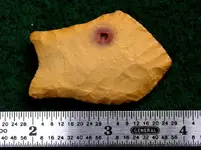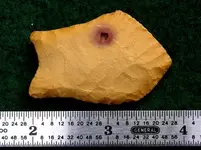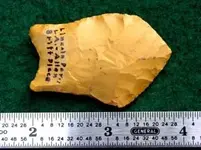You are using an out of date browser. It may not display this or other websites correctly.
You should upgrade or use an alternative browser.
You should upgrade or use an alternative browser.
Red Heart (second attempt)
- Thread starter spot
- Start date
K
Kentucky Kache
Guest
spot
Jr. Member
- #4
Thread Owner
I don't think I have a program in my computer for correcting the size of a photograph. Also, if there are any suggestions, I certainly invite them.
I used Windows Picture and Fax Viewer. When I opened the image with that software, I selected "open the image for editing" located to the right in the lower task bar of that software. That provided something called "paint" (an abbreviated version I'm sure). From there I selected "Image" from the upper task bar, then "Stretch and Skew" from it's pulldown. Then I simply selected 75% for both width and height. This gave me a file size that this web site would accept for posting but as you can see, it made the photo large.
I used Windows Picture and Fax Viewer. When I opened the image with that software, I selected "open the image for editing" located to the right in the lower task bar of that software. That provided something called "paint" (an abbreviated version I'm sure). From there I selected "Image" from the upper task bar, then "Stretch and Skew" from it's pulldown. Then I simply selected 75% for both width and height. This gave me a file size that this web site would accept for posting but as you can see, it made the photo large.
K
Kentucky Kache
Guest
Try using 30%.
Also, you can download photo tagger from download.com (free).
Also, you can download photo tagger from download.com (free).
rockman0_12
Jr. Member
That's a very nice Pelican Spot ! Big for the type too ! Personal find ? Where is it from ?
Thanks
Thanks
Cache Crazy said:Try using 30%.
Also, you can download photo tagger from download.com (free).
I used 40% at Microsoft office Picture Manager
& still a little Large.
30 Looks Great
ClonedSIM
Silver Member
- Joined
- Jul 28, 2005
- Messages
- 3,808
- Reaction score
- 24
- Golden Thread
- 0
- Location
- New Mexico
- Detector(s) used
- White's XLT
This find is awesome, but I gotta know what's going on with the red hole there! Is it natural, or something the maker added? What's the story behind it?
spot
Jr. Member
- #9
Thread Owner
Type: Pelican
Material: Local gravel chert (siltstone) with a red oxide inclusion.
Period: Late paleo - Early Archaic Part of the San Patrice point and tool assemblage.
Note: Of interest are the two diagonal flake scars that meets the opposite flake scars "head on". The top scars are the shorter, there is no way to know how far the other flake scars were originally as executed from the lower edge of this piece. They were quite long. Ground base with stem grinding to widest part of the piece.
Thanks for looking,
spot
PS......In reference to what the maker intended, I'm afraid speculation alone can answer that question. Assuredly, the inclusion was visable in the stone when the person was fabricating the piece so it would have been able to be seen. However, it's likely that the material of the inclusion was softer and has weathered a good deal through the milenia. I just thought it was interesting to look at.
The piece was located many years ago in Lincoln Parish, Louisiana which is in the NW corner of the state not far from the city of Shreveport where I make my home.
I've included the obverse view of this Pelican; hope it works out.
Many thanks to all of you for your advice on how to work with the photographs.
Thanks for looking,
spot
Material: Local gravel chert (siltstone) with a red oxide inclusion.
Period: Late paleo - Early Archaic Part of the San Patrice point and tool assemblage.
Note: Of interest are the two diagonal flake scars that meets the opposite flake scars "head on". The top scars are the shorter, there is no way to know how far the other flake scars were originally as executed from the lower edge of this piece. They were quite long. Ground base with stem grinding to widest part of the piece.
Thanks for looking,
spot
PS......In reference to what the maker intended, I'm afraid speculation alone can answer that question. Assuredly, the inclusion was visable in the stone when the person was fabricating the piece so it would have been able to be seen. However, it's likely that the material of the inclusion was softer and has weathered a good deal through the milenia. I just thought it was interesting to look at.
The piece was located many years ago in Lincoln Parish, Louisiana which is in the NW corner of the state not far from the city of Shreveport where I make my home.
I've included the obverse view of this Pelican; hope it works out.
Many thanks to all of you for your advice on how to work with the photographs.
Thanks for looking,
spot
Attachments
creekhunter
Bronze Member
- Joined
- Dec 14, 2007
- Messages
- 1,237
- Reaction score
- 572
- Golden Thread
- 0
- Location
- Cincinnati, Ohio
- Detector(s) used
- Radio Shack
- Primary Interest:
- All Treasure Hunting
Now that relic has character! 

Pinellas Man
Hero Member
Whoa, I like that one Spot! 8)
Similar threads
- Replies
- 7
- Views
- 282
- Replies
- 14
- Views
- 839
Users who are viewing this thread
Total: 1 (members: 0, guests: 1)
Latest Discussions
-
-
-
-
Naturallly Occuring Formation OR Manmade Treasure Marker/Sign?
- Latest: Crosse De Sign
-






